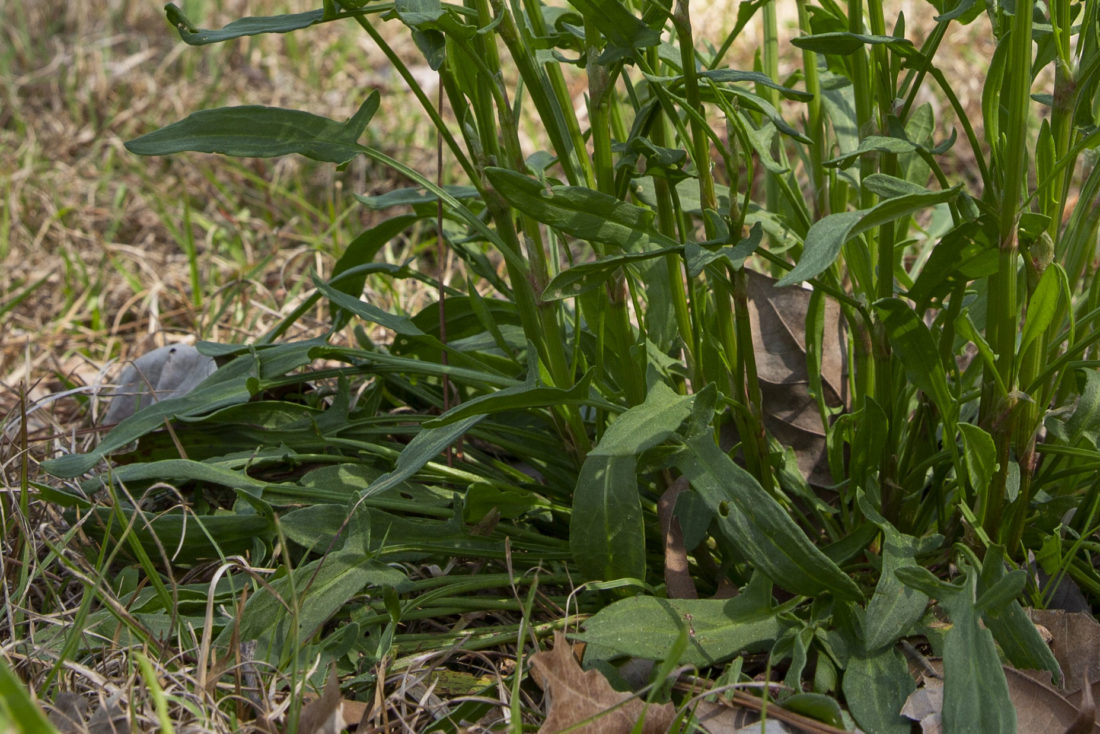For much of the fifth grade, I kept a nine-volt battery hidden in my desk. I didn’t hand it back to the teacher after some class experiment, and when I grew bored, I would press the battery to my tongue to deliver a thrilling little jolt.
For a similar kick, in the slow days running around my Gone with the Wind–themed subdivision in South Georgia (there was Rhett Butler Drive, Scarlett Drive, and Pitty Pat Lane, all set on Lake Tara), I would wander over to a lot planted with skinny slash pines and overgrown with tall grasses to chomp on sourweed. I don’t remember who taught me to identify the plant, with its tiny crimson flowers, but I do remember the acid punch, the puckering pleasure of chewing on its stalks.
Sourweed reliably appeared in our part of the state each spring, just as azaleas began to peek out from their sticky buds, and the tall stalks lasted well into the beginning of summer vacation, though they grew tougher and bitter as temperatures rose. The pack of neighborhood kids I ran with would pluck and chew and then discard the stalks: Sourweed, as we knew it, was entertainment, a prop in our cul-de-sac adventures.

I fell out of my sourweed habit when I moved away to college and then to big, concrete-covered cities. Then, six years ago, my husband and I traveled to Wales and arranged a foraging excursion to hunt for wild hop shoots, mushrooms, and ramps. What I didn’t expect to encounter in the wild, rolling hills of the British Isles was my sourweed, growing aplenty.
Sourweed, our guide explained, is actually Rumex acetosella, aka sheep or red sorrel, and though other sorrel varieties are native to North America, sheep sorrel is a red-coated invader that hails from across the pond and now grows all over the northern hemisphere.
I thought I knew sorrel. I went to a fancy French cooking school. I had eaten a certain L.A. restaurant’s famous sorrel rice bowl. But I had never connected the sourweed of South Georgia with the tart greens I bought for $5.50 a pound at the farmers market. I had never even considered harvesting or eating sourweed leaves. But you can and should, especially in the spring, the time when sorrel’s lemony-crisp acidity announces the end of cold weather.
I returned home to Georgia this March, and reliably, the fallow fields of Appling County, where I grew up, were a sea of red-fringed stalks. Sheep sorrel thrives in soil with a low pH and poor fertility, and though it’s billed as a weed, it isn’t that vexing to farmers, according to Shane Curry, the local agricultural extension agent—they can easily snuff it out by improving their fields’ soil health.
Lucky for me, one of my parents’ neighbors must have poor soil, because sheep sorrel filled his front yard. After greedily harvesting a bag, I tossed the leaves into a simple arugula salad, every few bites of which delivered sorrel’s characteristic zing.
Plenty of traditional sorrel recipes—say, sorrel soup or a cream-based sorrel sauce—call for cooking the green, which tames its bitterness, but as soon as sorrel meets a hot pan, it turns brown, making for a drab, not-fit-for-company presentation. I prefer to eat the leaves raw as an accent or blended into sauces.
I recently threw two big handfuls of sorrel into a batch of herb-y chimichurri, which allowed me to cut the vinegar in the recipe back from one-third cup to just a tablespoon. Sorrel also adds a grassy freshness to homemade ranch dressing. Just blend a half cup of mayonnaise with a half cup of buttermilk, two cups of sorrel, a few tablespoons of onion and another herb of your choice, and one clove of garlic. Add a squeeze of lemon and you have a salad dressing, crudité dip, or classy dunk for chicken fingers. I also threw together a batch of sorrel pesto in a food processor (two cups chopped sorrel, one-third cup each grated parmesan and toasted pecans, a half-cup of olive oil, and salt and pepper to taste). The pesto works beautifully stirred into white beans or mixed into a chicken, potato, or rice salad. On a whim, I decided to pair the pesto with a hot buttered baguette, smoked trout, and fresh goat cheese for a lunch chicer than I ever could have imagined as a barefoot, sourweed-chomping kid in South Georgia.









